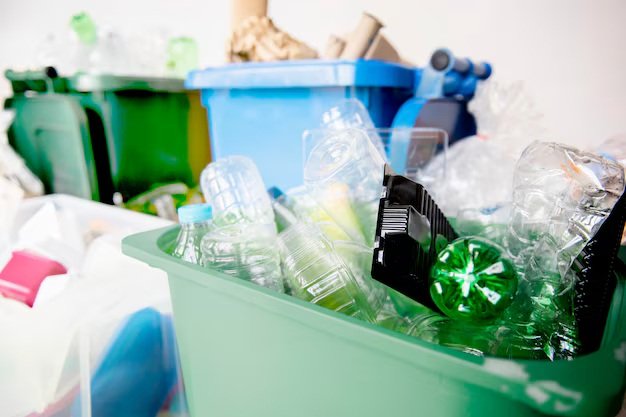10 Benefits of Recycling to the Environment and Why You Should Get Involved
In today’s world, rapid urbanisation and thriving industries have led to increased waste generation, as the incineration of waste in landfills continues to harm the planet. Various industries rely on manufacturing processes that contribute to large amounts of solid waste, which can harm the environment. To minimise the impact of waste, recycling offers a sustainable solution by reintegrating waste materials into the production process to make new products. This approach is effective in minimising waste and helps conserve natural resources, reducing the rate at which they are extracted and their impact on the environment.
In this article, we will discuss the 10 key environmental advantages of recycling and the importance of getting involved in prioritising the process. Understanding the benefits of recycling and how it contributes to a healthier environment is crucial in ensuring a sustainable future for the next generation.
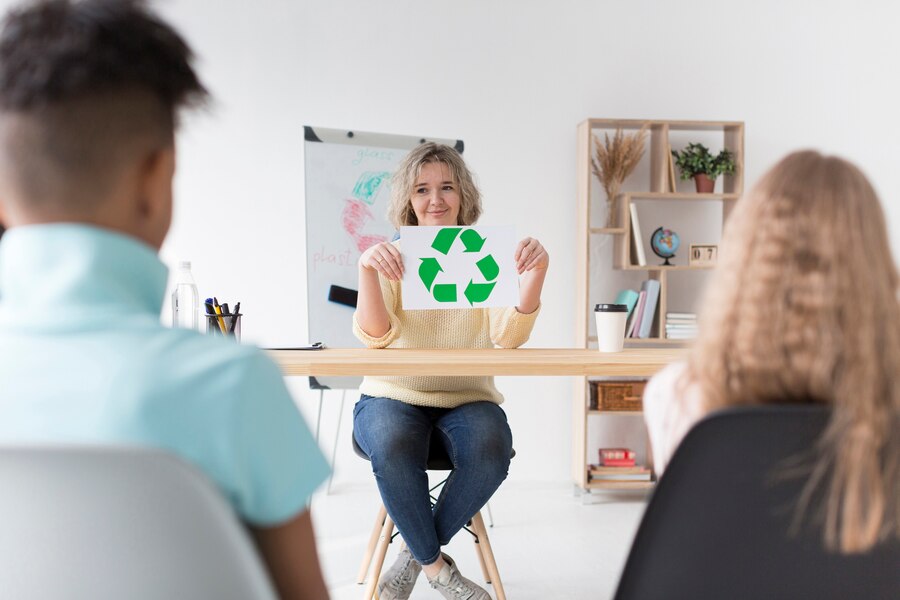
In This Article
- What Is Recycling?
- Why Is Recycling Important?
- 10 Key Environmental Benefits of Recycling
- Changing Behaviours through Education
- Call to Action: How You Can Get Involved
- Conclusion: The Path to a Greener Future
What Is Recycling?
Recycling is a sustainable solution to address the world’s waste problem. It involves the process of collecting and converting waste materials into new products. Recycling is an environmentally friendly method that repurposes materials, thereby reducing the need to extract raw materials to make new products. It has been effective in reducing solid waste that would otherwise be sent to landfills.
According to the U.S. Environmental Protection Agency (EPA), recycling offers significant benefits to the environment, the economy, and the community. Recent data from the EPA shows that recycling and composting municipal waste saved over 190 million metric tons of carbon dioxide equivalent in 2018. These statistics highlight the importance of recycling and its role in mitigating climate change.
Here is the recycling data summary based on information collected from the EPA page:
| Category | Details |
| Environmental Benefits | – Conserves natural resources – Reduces the impact of climate change (saved 193 million metric tons of CO2 equivalent in 2018) – Saves energy (e.g., 10 plastic bottles can power a laptop for 25+ hours) |
| Economic Benefits | – 681,000 jobs – $37.8 billion in wages – $5.5 billion in tax revenue (all per year in the U.S.) |
| Community Benefits | – Environmental justice is promoted – Reduces waste in underserved communities – Effective in addressing international waste management issues |
| Challenges | – Public confusion about recycling – Outdated recycling infrastructure – Weak domestic markets for recycled materials – Need for better recycling metrics |
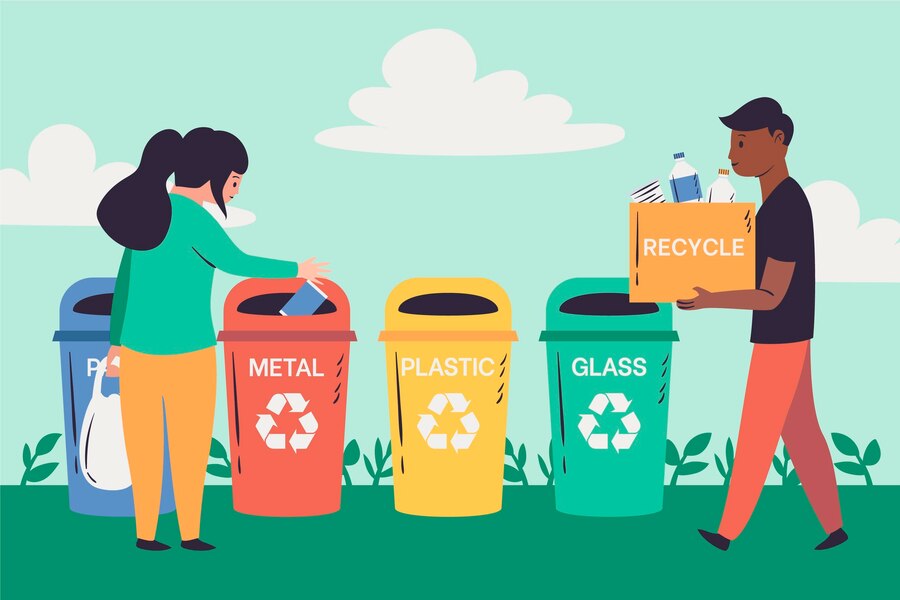
Why Is Recycling Important?
Recycling is the answer to reducing global waste and to ensuring a greener future. Without the process of recycling, the Earth’s natural resources would be extracted excessively. This will lead to deforestation, destruction of natural habitats, more carbon emissions, pollution, and depletion of natural resources. By simply recycling, we minimise situations like this that would affect the environment and contribute to climate change.
Recycling is a sustainable option that helps maintain the level of productivity of various industries without the need to extract new raw materials, thereby reducing environmental pollution.
Learn More: What Is Textile Recycling and How Does It Work?
10 Key Environmental Benefits of Recycling
#1. Reduce Environmental Pollution
One of the major benefits of recycling is that it reduces environmental pollution by reusing waste materials. Solid waste materials that are not sent to designated recycling facilities or centres often end up in landfills. The waste in landfills is often incinerated, contributing to global warming. Landfills are problematic sites that release harmful gases such as methane, and the burning waste releases carbon dioxide along with other pollutants into the atmosphere.
We live in a world where almost every item we purchase is packed or wrapped in plastic or other non-biodegradable materials. From plastic bottles to straws, disposable cutlery, and food packaging containers, millions of tons of this waste end up in landfills or the ocean. The Great Pacific Garbage Patch is a stark example of how much plastic we dump in the Pacific Ocean. This floating island filled with plastic debris is a reminder of our throwaway culture and the environmental effects of our actions.
If we take recycling seriously and prioritise proper waste management, the amount of waste that ends up in landfills and the ocean will be significantly reduced. This is why recycling is important—it is a sustainable practice aimed at mitigating global warming and promoting environmental sustainability.
Case Study: The Impact of Recycling on Ocean Health
In 2020, the European Union implemented strict environmental regulations on plastic waste management—an initiative that significantly reduced plastic pollution in the Mediterranean Sea. The EU’s vision to reduce plastic waste incorporated recycling programs that helped reduce the amount of plastic waste dumped in the ocean. This initiative also helped to restore marine ecosystems that were affected by human-induced pollution. This case study highlighted the environmental benefits of recycling on a large scale.
#2. Conserves Natural Resources
Recycling has played a major role in conserving natural resources. The practice of reusing waste materials to make new products has reduced the rate at which raw materials are extracted. Through recycling, waste materials from paper, plastics, metal, and glass are reused to make new products without the need for additional raw materials. Recycling has helped preserve natural forests, reduce mining activities, and conserve water resources to ensure a sustainable environment for future generations.
Deforestation and Recycling
Paper production relies on wood harvesting, and the industry remains one of the largest consumers of these resources. This reliance leads to deforestation and loss of biodiversity. Recycling paper materials is an effective way to reduce the demand for raw materials that contribute to the mass destruction of trees. By recycling more paper material, we protect natural forests and wildlife habitats and conserve resources. Data from the EPA suggests that recycling a ton of paper can save approximately 17 trees, conserve up to 7,000 gallons of water, and save 4,000 kilowatt-hours of energy.
Real-World Example: Aluminium Recycling
According to the Aluminium Association, aluminium is easy to recycle, and doing so saves about 95% of the energy required to manufacture new aluminium from raw ore. Aluminium can be recycled multiple times without losing its quality. The aluminium recycling industry is active and has seen improvements recently, with countries like the United States recycling over 60% of all its aluminium used in making beverage containers.
#3. Protect Wildlife and Their Habitats
Poor waste management results in more than just environmental pollution—it threatens the well-being of wildlife and their natural habitats. Improperly disposed of plastic waste poses a significant threat to wildlife, particularly marine species, as nearby water bodies and the ocean often serve as dumping sites for plastic waste. Plastic pollution in the ocean impacts marine species, which may become entangled in plastic debris or ingest it.

Statistics on Plastic Pollution
According to the International Union for Conservation of Nature (IUCN), over 40 million tons of plastic are produced globally each year, and about 14 million tons enter the ocean as waste. Plastic debris accounts for about 80% of all marine litter found in surface water and deep-sea sediments.
Here is a table containing the summary of data on plastic pollution, according to the IUCN Issues Brief
| Category | Details |
| Plastic Production | Over 460 million metric tons annually |
| Plastic Pollution | 20 million metric tons yearly, increasing by 2040 |
| Ecosystem Impact | Affects all ecosystems, and drives biodiversity loss |
| Health Impact | Carcinogens in plastics, found in blood, food, and drinks |
| Economic Impact | Negative effects on trade, tourism, fisheries, and more |
| Main Pollution Sources | Land-based: runoff, littering; Marine: fishing gear, shipping paint |
| Micro/Nano Plastics | Break down from larger plastics; harmful to organisms |
| Global Treaty Need | Reduce production, phase out harmful subsidies, enforce global compliance |
| Proposed Actions | Reduce plastic production, improve recycling, global collaboration |
| Climate Impact | Plastic production and waste release greenhouse gases |
Learn More: What Is Textile Recycling and How Does It Work?
Impact on Marine Life
Recently, marine species like sea turtles, seabirds, and fish have been found entangled in plastic. What’s even more alarming is that traces of plastic materials are often discovered in their stomachs. When sea creatures ingest plastic, it can lead to intestinal blockage, malnutrition, and even death. Recycling is a crucial solution to reducing the amount of plastic in the ocean and protecting these marine species.
Conservation Efforts: The Role of Recycling
Conservation organisations are promoting recycling as a key strategy to protect wildlife and marine ecosystems. An organisation committed to protecting wildlife is the World Wildlife Fund (WWF), which has launched campaigns to reduce plastic waste and improve recycling rates globally. Through this initiative, the WWF has raised public awareness about the environmental impact of poor waste disposal.
#4. Save Energy
Recycling conserves energy by reducing the need to manufacture new products from scratch. In general, recycling requires less energy than extracting, transporting, and processing raw materials. For example, recycling aluminium and steel saves up to 20 times (i.e., between 60-95%) energy compared to extracting raw ores to make a finished product.
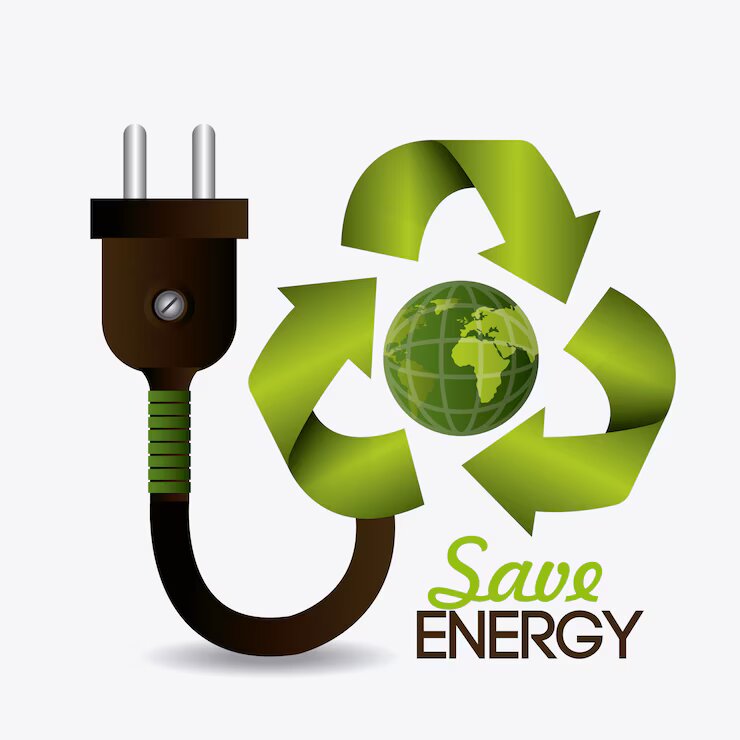
Energy Savings from Recycling
Recycling conserves energy. According to the Wisconsin Department of Natural Resources, the amount of energy saved from recycling a ton of aluminium is equivalent to the amount of electricity consumed by the average American home for more than a decade. Additionally, recycling glass saves approximately 30% of the energy required to manufacture new glass from raw materials, the EPA says.
Sustainable Manufacturing Practices
Various industries are prioritising sustainability by incorporating recycled materials into their production lines. These have many benefits—from reducing energy consumption to lowering their carbon footprint—and adopting sustainable practices plays a major role in mitigating climate change.
#5. Reduces the Need for Landfills and Incineration
Landfills and incineration are commonly used methods to get rid of solid waste, but both have significant negative effects on the environment. Landfill sites take up a vast amount of space, and the waste they contain often includes toxic chemicals that can leach into the soil or groundwater. Incineration, on the other hand, continuously releases poisonous gases into the atmosphere, contributing to air pollution and global warming.
The Problem with Landfills
Landfill sites contribute significantly to global warming. As organic waste decomposes, it releases methane, a greenhouse gas 25 times more potent than CO2. With the ongoing creation of more landfills as the existing ones reach capacity, this problem is only expected to worsen in the coming years.
Recycling as a Solution
Recycling offers a viable solution to the global waste problem. By prioritising recycling, we can reduce waste, preserve natural resources, protect biodiversity, reduce air pollution, and promote environmental sustainability. A key benefit of recycling is its ability to decrease the amount of solid waste. Composting, a similar process, focuses on organic waste like food scraps and yard waste. It is also a sustainable method to reduce waste sent to landfills by converting organic materials into nutrient-rich compost for growing food.
Learn More: Recycling Vs. Upcycling: What Is the Difference?
#6. Promotes Community Involvement and Social Responsibility
Recycling can serve as a form of social activity that unites communities in pursuit of sustainable goals. When communities collectively agree to support recycling initiatives, it becomes easier to achieve sustainability, leading to healthier living environments.
Community recycling programs provide an opportunity for people to work together towards a common goal of living sustainably.

Community Recycling Programs
Many communities have successfully established local recycling programs where residents actively participate in collecting and sorting recycling materials. These community-led recycling programs often include education initiatives to raise awareness about the importance of recycling. Beyond promoting environmental sustainability, community-inspired recycling efforts can support local causes, such as fundraising for hospitals or schools.
Social Enterprises and Recycling
Social enterprises committed to recycling are at the forefront of environmental change. These organisations provide employment opportunities for marginalised groups while promoting sustainability for a greener future. For example, in developing countries, waste pickers are organised into cooperatives that collect and recycle waste. This green initiative not only creates jobs but also improves local waste management.
#7. Saves Money
Recycling can be cost-effective by considering the costs associated with waste disposal and the extraction of raw materials. It can lower the production cost of businesses since fewer new raw materials will be required. Recycling also offers economic benefits to consumers by extending the life of products and reducing the need for new purchases.
Economic Benefits for Businesses
Businesses that prioritise recycling can experience significant economic benefits. For instance, manufacturing products with recycled materials costs less than using new products. Companies that embrace this may also benefit from tax incentives and lower waste disposal fees. Additionally, businesses committed to sustainability can enhance their brand image and attract eco-conscious consumers.
Consumer Savings
Recycling can be rewarding for consumers. BY Recycling and reusing items such as glass jars, paper, and plastic containers, consumers will not only reduce their household waste but also save money by avoiding the purchase of new items. Moreover, recycling programs that offer monetary incentives, like bottle deposit schemes, reward consumers for returning recyclables, making recycling even more financially beneficial.
#8. Creates Jobs and Stimulates the Economy
Recycling creates employment opportunities that contribute to economic growth. The recycling industry offers various job positions, ranging from collection and sorting to processing and manufacturing, many of which are labour-intensive. By promoting recycling, more job opportunities are created, helping to reduce global waste generation.
Job Creation in the Recycling Industry
According to the U.S. Environmental Protection Agency (EPA), the recycling and reuse industry in the country supports over 681,000 jobs, generates about $37.8 billion in wages, and contributes $5.5 billion in tax revenues annually. These positions range from unskilled roles in collection and sorting to skilled roles in processing and manufacturing.
Economic Growth through Recycling
Job creation is not the only economic benefit of recycling. The industry stimulates economic growth by reducing the need for raw materials, lowering production costs and fostering innovation in eco-friendly manufacturing practices. Countries that develop robust recycling industries can also benefit from increased exports of recycled materials.
Case Study: Recycling and Economic Development
In 2019, South Korea was able to achieve a recycling rate of over 80%, thanks to government policies prioritising recycling and waste reduction. The country’s recycling industry has created employment opportunities and reduced its dependence on imported raw materials.
#9. Reduces the Need to Import New Materials
Recycling improves economic growth by reducing the demand and reliance on imported raw materials. Many countries depend on imports to keep their industries running, but ecycling offers a solution by reducing this dependency.
Benefits for Resource-Poor Countries
Recycling is particularly beneficial for resource-poor countries. By implementing recycling programs, these nations can develop local sources for raw materials, lessening their reliance on expensive imports. This also helps to reduce the environmental impact associated with raw material extraction and transportation.
Example: Japan’s Recycling Success
Japan, with its limited natural resources, has significantly reduced its reliance on imported raw materials by embracing recycling. Due to these resource limitations, Japan implemented strict recycling regulations to ensure materials like paper, plastics, and metals are efficiently recycled. This strategy has effectively reduced the country’s dependency on imports.
#10. Educate the Public on Environmental Stewardship
Educating the public about environmental stewardship is a key benefit of recycling. Many recycling programs often incorporate educational components designed to raise public awareness about the environmental impact of poor waste management and the importance of adopting sustainable practices.
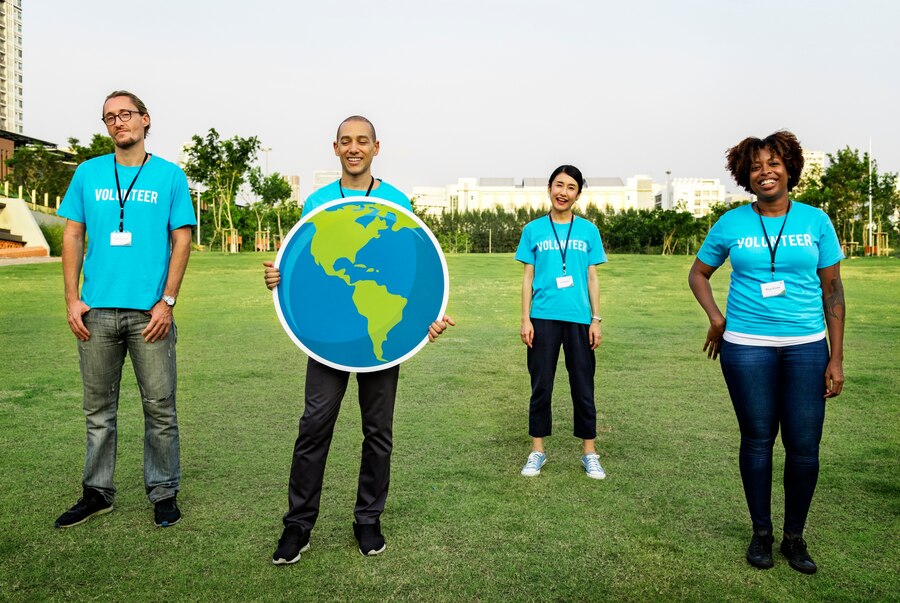
Public Awareness Campaigns
Governments and organisations often organise public awareness campaigns to educate the public on the importance of recycling. These campaigns utilise platforms such as social media, television, and radio to disseminate information. Additionally, educational programs introduced in classrooms play a vital role in teaching the younger generation about environmental sustainability.
Changing Behaviours through Education
Education plays a crucial role in influencing behaviours and encouraging the adoption of sustainable practices. Not everyone understands the environmental and economic benefits of recycling. However, through education, those who are unaware can gain a better understanding, leading to more informed life choices to live sustainably that promote sustainable living.
The Role of Schools and Universities
Educational institutions have the power to inspire the next generation of environmental and climate activists. Many schools and universities have implemented recycling programs to encourage students to reduce their carbon footprint and prioritise recycling. These programs help instil sustainable habits, ensuring a greener future.
Overcoming the Challenge of Recycling
While recycling offers significant environmental benefits, it is not without challenges. Common issues include contamination of recyclables, a lack of infrastructure in some areas, and the economic feasibility of recycling certain materials. Addressing these challenges is crucial in making recycling programs more effective.
Contamination Issues
Contamination remains one of the major challenges in recycling. When recyclable materials are mixed with non-recyclables, the quality of the recycled products can be compromised. This is why sorting is an important process, and educating the public on proper recycling practices can help solve these issues and minimise contamination during recycling.
Infrastructure Gaps
Recycling infrastructures are often scarce in developing countries, which can hinder effective waste management. Investing in recycling facilities and systems can help developing regions recycle more waste materials.
Economic Feasibility
Not all materials are economically viable to recycle. For some materials, the recycling process can be quite expensive, potentially exceeding the cost of manufacturing new products. Efforts are ongoing to make more materials recyclable.
Solution and Innovations
Emerging innovations in recycling technology are helping to overcome the challenges associated with recycling. New methods of sorting and processing recyclables have been developed to make it easier to recycle a wider range of materials.
Call to Action: How You Can Get Involved
Recycling is an environmental responsibility for a sustainable future with fewer landfills and less air pollution. We all have a role to play. By taking small steps and prioritising sustainability, you can contribute to a healthier Earth.
- Start Recycling at Home: You can begin recycling at home by setting up a system for plastics, paper materials, glass, and metal. Make sure these items are properly cleaned and sorted.
- Support Local Recycling Programs: Get involved with community recycling programs. Your actions can inspire others to follow in your footsteps.
- Educate yourself and others: Learning is an ongoing process—keep educating yourself and feel free to share new insights about recycling with others, whether it’s your family, friends, community, group, etc. Encourage your workplace to implement recycling programs to reduce waste.
- Reduce and Reuse: Reusing items is better than discarding them after only a few months of use.
- Advocate for Policy Change: Support policies and regulations aimed at promoting recycling. You can participate in local government initiatives to improve recycling infrastructure.
Conclusion: The Path to a Greener Future
Poor waste management is a pressing issue that affects the environment. Recycling is a key solution for reducing waste and air pollution, conserving resources, and promoting economic growth.
Understanding these 10 key environmental benefits of recycling and taking sustainable actions contributes to a greener and more sustainable future.


